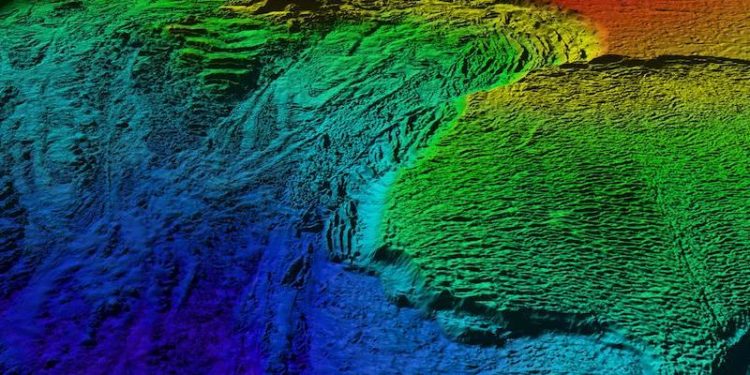Seventeen fishing vessels from seven Norwegian fishing companies are currently trying out Mareano charts on their chart plotters. These show undersea terrain and bottom types produced using advanced multi-beam echo sounders.
‘These charts are available in a variety of formats that can be used in the most common chart plotters,’ said Hanne Hodnesdal, the Mapping Authority’s representative in the executive group.
Testing began last year, when the charts were supplied to thirteen fishing vessels, and this is now it has increased to seventeen vessels.
‘We are now waiting for feedback from the fishing vessels testing this new tool,’ said Frithjof Moy of the Marine Research Institute, who heads Mareano’s executive group.
The Mareano charts are produced using data from advanced multi-beam echo soundings to provide highly detailed seabed imagery. However, the most detailed charting is reserved for areas beyond Norwegian territorial waters.
‘The Norwegian Armed Forces has classified information about the seabed off Norway. This means that we must degrade the data quality of the terrain in coastal areas,’ explained Hanne Hodnesdal.
In addition to the terrain cartography, a seabed map is also made showing what the bottom consists of. This information is not classified.
‘The bottom maps are based on seabed reflection data from multi-beam sources, seabed samples and video observations, providing as detailed information on the nature of the seabed both within and outside the territorial boundary,’ said Lilja R. Bjarnadóttir of the Norwegian Geological Survey.
Mareano maps depth and topography, sediment composition, biodiversity, habitats and biotopes as well as pollution in the seabed in Norwegian offshore areas. The programme’s aim is to provide answers to questions such as:
• How is the seascape of the Norwegian continental shelf?
• What does the seabed consist of?
• How is the biodiversity distributed on the seabed?
• How are habitats and biotopes distributed on the seabed?
• What is the relationship between the physical environment, biodiversity and biological resources?
• How much contaminants are stored in the bottom sediments?
‘We publish data collected through Mareano on mareano.no and geonorge.no as they are quality assured,’ Frithjof Moy added.
Mareano’s pages can be used to view charts, or to compile their own. Other data from Mareano can also be downloaded from various data owners, with links to these partners on Mareano’s page.
The Institute of Marine Research, the Geological Survey of Norway and the Norwegian Mapping Authority comprise the Executive Group which is responsible for carrying out the Mareano field sampling and other scientific activities. The Programme Group, led by the Norwegian Environment Agency, has the executive responsibility for the Mareano activities.
The programme is financed by the Ministry of Trade, Industry and Fisheries, and the Ministry of Climate and Environment. These ministries, inclusive of the ministries of Petroleum and Energy, Local government and Modernisation and the Ministry of Transport and Communications, form the Mareano steering board.









